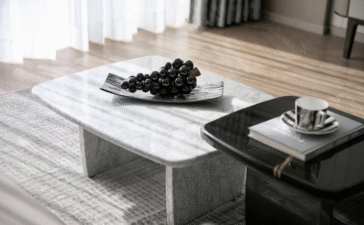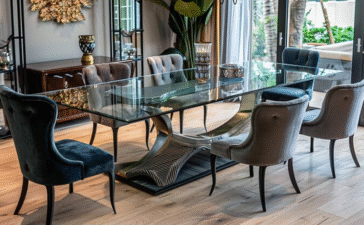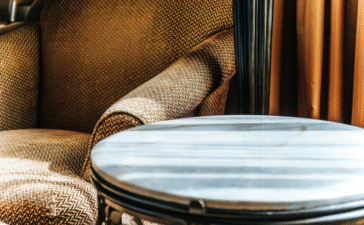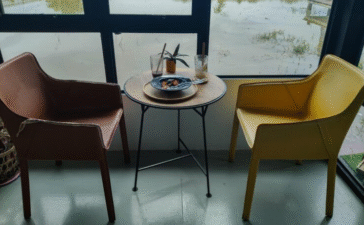Finding the perfect sofa that combines exceptional comfort, space efficiency, and cutting-edge design has become increasingly important for modern homeowners. Compression sofas represent a revolutionary approach to furniture design, utilizing advanced materials and engineering to deliver superior comfort while addressing the unique challenges of contemporary living spaces.
These innovative pieces of furniture have gained significant traction among urban dwellers, health-conscious individuals, and anyone seeking optimal comfort without compromising on space. Unlike traditional sofas that rely solely on springs and basic cushioning, compression sofas incorporate sophisticated technologies like memory foam layers, responsive air pockets, and adaptive support systems that mold to your body’s natural contours.
The growing popularity of compression sofas stems from their ability to solve multiple problems simultaneously. They provide therapeutic benefits for those with back pain or posture issues, offer space-saving solutions for compact apartments, and deliver long-lasting comfort that maintains its integrity over years of use. As more people prioritize both functionality and wellness in their furniture choices, compression sofas have emerged as a smart investment for the modern home.
Understanding what makes these sofas unique and how they can transform your living experience will help you make an informed decision about whether a compression sofa is the right choice for your specific needs and lifestyle.
What is a Compression Sofa?
A compression sofa is an innovative furniture piece that utilizes advanced compression technology to provide superior comfort and support through specialized materials and construction techniques. The core principle behind compression sofas lies in their ability to distribute weight evenly while conforming to the user’s body shape, creating a personalized seating experience that traditional sofas cannot match.
The technology behind compression sofas centers around multiple layers of high-density memory foam, gel-infused materials, and responsive air chambers that work together to create optimal support. When pressure is applied, these materials compress strategically, allowing the sofa to cradle your body while maintaining proper spinal alignment. The compression mechanism responds dynamically to movement, ensuring consistent comfort whether you’re sitting upright, reclining, or lying down.
Most compression sofas incorporate proprietary foam formulations that combine traditional memory foam with newer materials like copper-infused foam, bamboo charcoal foam, or cooling gel layers. These materials not only enhance comfort but also provide additional benefits such as temperature regulation, antimicrobial properties, and improved durability. The compression chambers within the sofa are precisely engineered to target different pressure points, offering customized support for various body types and sleeping positions.
The construction typically features a zoned support system where different areas of the sofa have varying levels of firmness. This design ensures that heavier body parts like hips and shoulders receive adequate support while maintaining softer compression for lighter areas. The result is a sofa that adapts to your body rather than forcing your body to adapt to it.
Benefits of Compression Sofas
Compression sofas offer numerous advantages that extend far beyond basic seating comfort, providing tangible health and lifestyle benefits that make them an increasingly popular choice among discerning consumers. The primary advantage lies in their exceptional pressure relief capabilities, which help reduce stress on joints and improve circulation during extended periods of sitting or lounging.
The ergonomic design of compression sofas promotes proper spinal alignment, which can significantly reduce back pain and muscle tension. Medical professionals often recommend memory foam and compression-based seating for individuals with chronic pain conditions, as these materials help distribute body weight more evenly than traditional spring-based furniture. This even weight distribution reduces pressure points that can cause discomfort and numbness during long periods of use.
Temperature regulation represents another significant benefit of modern compression sofas. Many models incorporate cooling technologies such as gel-infused foam layers, breathable fabric covers, and air circulation channels that prevent heat buildup. This feature is particularly valuable for individuals who tend to sleep warm or live in climates where temperature control is essential for comfort.
The durability of compression sofas typically exceeds that of traditional furniture due to their high-quality materials and construction methods. Memory foam and other compression materials are designed to return to their original shape after use, preventing the sagging and wear patterns common in conventional sofas. This resilience translates to a longer lifespan and better value for your investment over time.
Versatility is another key advantage, as many compression sofas function as convertible furniture pieces. They can serve as comfortable seating during the day and transform into sleeping surfaces for guests, making them ideal for multi-functional living spaces. This adaptability is particularly valuable for urban dwellers who need furniture that serves multiple purposes without compromising on comfort or style.
Compression Sofa for Small Spaces
Urban living and the growing trend toward minimalist lifestyles have made space optimization a crucial consideration in furniture selection. Compression sofas excel in small spaces due to their efficient design, multi-functional capabilities, and ability to provide maximum comfort within a compact footprint.
The space-saving benefits of compression sofas extend beyond their physical dimensions. Many models feature hidden storage compartments within the compression chambers, allowing you to store bedding, pillows, or seasonal items without requiring additional furniture pieces. This integrated storage solution helps maintain clean, uncluttered living spaces while maximizing functionality.
Convertible compression sofas offer exceptional value for studio apartments, guest rooms, and multipurpose spaces. These models can seamlessly transition from comfortable daytime seating to full-size sleeping surfaces, eliminating the need for separate furniture pieces. The compression technology ensures that the sleeping surface remains comfortable and supportive throughout the night, providing guests with a quality rest experience.
The modular nature of many compression sofa designs allows for customization based on available space and specific needs. Sectional compression sofas can be configured in various arrangements to fit different room layouts, and individual modules can be rearranged as needed. This flexibility is particularly valuable for renters or individuals who frequently relocate.
Wall-hugger compression sofas represent another space-saving innovation, requiring minimal clearance behind the sofa for reclining functions. This design allows placement closer to walls, maximizing floor space in compact rooms. The compression mechanism operates vertically rather than requiring backward movement, making these sofas ideal for narrow living rooms or apartments with limited space.
Compression Sofa vs Traditional Sofa
Understanding the differences between compression sofas and traditional sofas helps consumers make informed decisions based on their specific needs, preferences, and living situations. The comparison reveals distinct advantages and potential drawbacks of each option across multiple factors including comfort, durability, cost, and functionality.
Traditional sofas typically rely on spring systems, basic foam padding, and fabric or leather upholstery to provide seating comfort. While these sofas can offer initial comfort, they often develop sagging, uneven support, and wear patterns over time. The spring systems may lose tension, and the foam padding can compress permanently, leading to decreased comfort and support. However, traditional sofas often come at lower initial costs and offer familiar comfort that many consumers find appealing.
Compression sofas utilize advanced materials and engineering to provide consistent, long-lasting comfort that adapts to individual body types and preferences. The initial investment is typically higher than traditional options, but the superior durability and health benefits often justify the additional cost over time. The compression technology maintains its supportive properties for years, preventing the common issues of sagging and uneven wear that plague traditional sofas.
Maintenance requirements differ significantly between the two options. Traditional sofas may require professional cleaning, spring repairs, or cushion replacement over their lifespan. Compression sofas generally require minimal maintenance due to their advanced materials and construction, though they may need specialized cleaning products for certain foam types..
Best Compression Sofas on the Market
Selecting the right compression sofa requires understanding the leading brands and models that have established themselves as industry leaders through quality construction, innovative features, and positive consumer feedback. The market offers various options ranging from budget-friendly models to premium designs that incorporate the latest comfort technologies.
High-end compression sofas from established furniture manufacturers typically feature multi-layer foam systems, premium upholstery materials, and extensive customization options. These models often include advanced features such as adjustable firmness levels, integrated heating and cooling systems, and smart technology that monitors usage patterns to optimize comfort settings. Premium options also tend to offer longer warranties and superior customer service support.
Mid-range compression sofas provide excellent value by combining essential compression technologies with quality construction at more accessible price points. These models typically feature dual-layer memory foam systems, durable fabric options, and basic customization capabilities. Many mid-range options include convertible features and storage solutions that enhance their functionality without significantly increasing costs.
Budget-friendly compression sofas focus on delivering core compression benefits through simplified designs and standard materials. While these options may lack advanced features, they still provide superior comfort compared to traditional sofas in similar price ranges. Budget models often serve as excellent introductions to compression technology for first-time buyers or those with basic comfort needs.
How to Choose the Right Compression Sofa for Your Home
Selecting the ideal compression sofa requires careful consideration of multiple factors that will impact your satisfaction and the sofa’s performance in your specific living situation. The decision-making process should begin with accurate measurements of your available space, including ceiling height, doorway dimensions, and any obstacles that might affect delivery and placement.
Room size and layout significantly influence sofa selection, as compression sofas are available in various configurations from compact loveseats to large sectionals. Consider how the sofa will be used throughout the day and whether you need additional features like storage, convertible sleeping surfaces, or modular components that can be reconfigured. The traffic flow around the sofa and its relationship to other furniture pieces should also factor into your decision.
Personal comfort preferences play a crucial role in compression sofa selection, as different models offer varying levels of firmness and support characteristics. Individuals who prefer firmer seating should look for high-density foam options with minimal sinkage, while those who enjoy a softer feel might prefer models with plush top layers over supportive bases. Testing different compression levels when possible helps identify personal preferences before making a purchase.
Budget considerations should encompass not only the initial purchase price but also long-term value factors such as durability, warranty coverage, and potential maintenance costs. Higher-quality compression sofas typically offer better longevity and may ultimately provide superior value despite higher upfront costs. Consider financing options if available and factor in delivery and setup costs when calculating total investment requirements.
Compression Sofas for Elderly or Health-Conscious Individuals
Compression sofas offer particular advantages for elderly individuals and health-conscious consumers seeking furniture that supports physical wellness and comfort. The therapeutic benefits of compression technology make these sofas valuable tools for managing various health conditions and promoting better posture and circulation.
For elderly users, compression sofas provide essential support that can help maintain independence and comfort in daily living activities. The adaptive nature of compression materials accommodates age-related changes in body weight and posture while providing consistent support that reduces strain on joints and muscles. Many elderly individuals find that compression sofas make sitting and standing easier due to the supportive surface that responds to movement rather than creating resistance.
Individuals with chronic back pain often experience significant relief when using compression sofas designed with proper spinal alignment in mind. The zoned support system targets different areas of the back with appropriate firmness levels, helping maintain natural spine curvature while sitting or reclining. Medical professionals frequently recommend memory foam and compression-based seating for patients with lower back issues, herniated discs, or other spinal conditions.
Circulation problems, common among elderly individuals and those with certain health conditions, can be alleviated through the pressure-relieving properties of compression sofas. The even weight distribution prevents pressure points that can restrict blood flow, while the adaptive materials allow for position changes without creating new pressure concentrations. This benefit is particularly important for individuals who spend extended periods sitting due to mobility limitations or health requirements.
Maintenance and Care of Compression Sofas
Proper maintenance of compression sofas ensures optimal performance and longevity while protecting your investment through preventive care and appropriate cleaning techniques. Understanding the specific requirements of compression materials helps maintain their supportive properties and appearance over many years of use.
Regular cleaning routines should address both surface maintenance and deeper cleaning needs based on usage patterns and environmental factors. Surface cleaning involves vacuuming fabric covers with appropriate attachments to remove dust, debris, and pet hair that can accumulate in fabric fibers. For leather covers, regular conditioning helps maintain flexibility and prevents cracking or fading over time.
Spill management requires immediate attention to prevent permanent staining or damage to compression materials. Most compression sofas feature removable covers that can be machine washed or professionally cleaned, but spot cleaning techniques should be employed for minor spills. Using appropriate cleaning products that won’t damage foam materials is essential, as harsh chemicals can break down compression properties.
Rotation and positioning strategies help ensure even wear and maintain compression integrity throughout the sofa. Regularly rotating cushions and changing seating positions prevents excessive wear in high-use areas while allowing compression materials to recover their original shape. Some compression sofas benefit from periodic airing out to maintain freshness and prevent moisture accumulation.
Environmental factors such as humidity, temperature, and sunlight exposure can affect compression sofa performance and longevity. Maintaining moderate humidity levels prevents mold and mildew growth in foam materials, while avoiding direct sunlight helps prevent fabric fading and material degradation. Proper ventilation around the sofa allows air circulation that supports material health..
You would also like: “caterpillar sofa“
Making the Right Investment for Your Comfort
Compression sofas represent a significant advancement in furniture technology that addresses the evolving needs of modern consumers seeking comfort, functionality, and health benefits in their living spaces. The investment in a quality compression sofa pays dividends through improved daily comfort, better sleep quality, and potential health benefits that extend far beyond traditional furniture capabilities.
The decision to purchase a compression sofa should be based on careful consideration of your specific needs, living situation, and long-term comfort goals. These innovative pieces of furniture offer solutions for space optimization, health support, and comfort enhancement that make them valuable additions to homes of all sizes and styles.
As compression technology continues to evolve, future developments promise even greater customization options, smart features, and material innovations that will further enhance the user experience. Early adoption of this technology positions you to enjoy these benefits while they continue to develop and improve.
The comprehensive benefits of compression sofas, from their space-saving capabilities to their therapeutic advantages, make them particularly valuable for urban dwellers, health-conscious individuals, and anyone seeking furniture that adapts to their needs rather than forcing adaptation to the furniture.
Frequently Asked Questions
What is the typical lifespan of a compression sofa?
A high-quality compression sofa typically lasts 10 to 15 years with proper care and maintenance, significantly longer than traditional sofas. The advanced materials used in compression sofas, particularly high-density memory foam and durable construction methods, contribute to their extended lifespan. Factors affecting longevity include usage frequency, weight loads, environmental conditions, and maintenance quality. Premium compression sofas with higher-density foams and superior construction can last even longer, with some manufacturers offering warranties of up to 20 years on their top-tier models.
Can a compression sofa actually help with back pain relief?
Yes, compression sofas can provide significant back pain relief through their adaptive support systems and pressure-relieving properties. The memory foam and compression materials conform to natural body curves while maintaining proper spinal alignment, reducing pressure points that contribute to back discomfort. Many healthcare professionals recommend compression-based seating for patients with chronic back pain, herniated discs, or posture-related issues. However, individual results may vary, and those with serious back conditions should consult healthcare providers before making furniture changes.
How do I properly clean and maintain my compression sofa?
Compression sofa maintenance involves regular vacuuming with appropriate attachments, immediate spill cleanup, and following manufacturer-specific cleaning instructions. Most models feature removable covers that can be machine washed or professionally cleaned. For spot cleaning, use mild, foam-safe cleaners and avoid harsh chemicals that can damage compression materials. Rotate cushions regularly to ensure even wear, maintain proper room humidity levels, and protect from direct sunlight to prevent material degradation. Professional deep cleaning every 12 to 18 months helps maintain optimal performance and appearance.
Are compression sofas worth the higher initial investment compared to traditional sofas?
Compression sofas generally provide excellent long-term value despite higher upfront costs due to their superior durability, health benefits, and multi-functional capabilities. The extended lifespan of 10 to 15 years compared to 5 to 8 years for traditional sofas means lower replacement costs over time. Additional value comes from health benefits such as improved sleep quality and back pain relief, space-saving features, and the multi-functional nature of many models. When calculated on a cost-per-year basis, compression sofas often prove more economical than traditional alternatives while providing superior comfort and functionality.
Can compression sofas be used for daily sleeping rather than just occasional use?
Many compression sofas are specifically designed for daily use as both seating and sleeping surfaces, making them excellent choices for studio apartments, guest rooms, or multipurpose spaces. The key is selecting models with appropriate thickness and support levels for extended sleeping comfort. Look for compression sofas with at least 6 to 8 inches of high-density foam and proper spinal support zones for comfortable nightly use. Some models feature dual-firmness options or adjustable support levels that can be customized for optimal sleeping comfort while maintaining daytime seating functionality.












